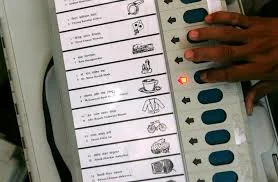By LAUREL HARBRIDGE-YONG (Professor, Northwestern University) and ALEXANDRA FILINDRA (Associate Professor, University of Illinois Chicago)
In 2020, Seattle mayor Jenny Durkan announced that she would not be seeking re-election. A central reason was threats of violence against her and her family. Ms. Durkan is not alone. In recent years, threats and violence have targeted public health officials, school board members, Congress members and staff, state legislators, mayors, and local election officials, among others. Several organizations such as the U.S. Capitol Police, the National League of Cities, the Bridging Divides Initiative, and the Brennan Center have produced reports raising concerns about this accelerating phenomenon and its potentially harmful effects on victims – officeholders and staff – and American democratic institutions. In 2022-2023, we conducted 110 in-depth interviews with subnational elected officials and staff. Everyone reported experiences with incivility, most respondents recounted threats of violence, and a small minority were exposed to actual violence. Clearly, America faces a problem of deteriorating democratic norms and an uptick in political violence.
In the face of this political landscape, we sought to understand how the partisan public responds to such events. When it comes to evaluating threats and violence against elected officials, does the public apply a consistent standard, informed by democratic norms, or does partisanship shape their evaluations? And if partisanship shapes their evaluations, do we face a vicious cycle where learning about political violence targeting your own party leads people to justify further political violence? Our initial research suggests that while partisanship shapes some aspects of public evaluations, people evaluate threats and violence similarly, regardless of the party targeted, and do not rationalize violence or become radicalized themselves; all hopeful signs for our democratic institutions.
Despite criticism of incivility and aggression from both sides of the political aisle, evaluations of civil, uncivil, and aggressive or violent behavior may not be politically neutral. This is because partisanship is a core part of people’s identity and shapes how they interpret events and information. Partisan identities create strong in-groups (copartisans) and out-groups (opposing partisans). Political scientists have shown that in-group favoritism is associated with different yardsticks for evaluating in-group and out-group legislators. Partisanship also plays a role in how people understand misbehavior. Partisans are more willing to rationalize and excuse in-group leaders’ misbehavior. They also evaluate norms breaking by the in-group less severely than similar behavior by the out-group, and rationalize undemocratic behaviors if they promote desired policies. This suggests that incivility, threats, and even violence perpetrated by co-partisans toward an opposing party legislator may not be viewed as seriously or be seen as concerning as the same behaviors by opposing partisans toward a co-partisan legislator.
Another concern about the public response to threats and violence against elected officials is that learning about threats or violence, particularly if they are perpetrated by members of the opposing party and target an elected official from one’s in-group, might increase people’s willingness to rationalize violence or engage in violence themselves. We know that the public’s response to political violence is shaped by social identities. When group identities are under threat, partisans can be induced to become radicalized and endorse violence towards members of the other side. Even though few endorse actual violence (e.g., physically harming people), support for the principle of political violence can nevertheless be harmful as it weakens democratic norms.
We assessed public evaluations of threats and violence in two ways. First, we assessed whether the public differentiates between civil, uncivil, threatening, and violent interactions between constituents and elected officials when partisanship is not mentioned. We asked survey respondents to evaluate 40 short descriptions of interactions between constituents and an elected official. After reading each description, respondents selected which words best describe the behavior: civil, appropriate, uncivil, inappropriate, violent, and criminal. Second, we used a survey experiment to examine whether the partisanship of the elected official and constituents shaped the public’s response. Survey respondents read a mock news story that described an incident between a Senator and a large group of his constituents. This incident was described as a civil townhall meeting, a civil protest, a protest with threats made toward the Senator, or a protest with violence directed toward the Senator. We also randomized the partisanship of the Senator. The constituents were always described as being in the opposing party than the Senator.
The results of the first study suggest that people do recognize differences in civility/appropriateness within democratic politics as well as the severity of incidents; incivility is distinct from threats and violence. First, even when constituents are critical of the politician, people distinguish between responses that are civil from those that are uncivil or slurs. Second, people view uncivil interactions and slurs similarly. Third, people view threats and violence as distinct from merely uncivil interactions. Finally, although there are some similarities in how people view threats and violence in democratic politics, violence tends to be evaluated more harshly than threats. Importantly, Democrats and Republican evaluate these incidents similarly. Without the presence of partisan cues, the public recognizes what behaviors are inconsistent with democratic norms and which are not.
When people evaluate incidents where they know the partisanship of the elected official and the constituents, partisanship plays a more limited role than some scholarly literature might suggest. Regardless of whether the targeted Senator is from the in-group or the out-group, partisans in the public recognize threatening and violent protests as less appropriate and less civil than a civil townhall or civil protest and identify them as more criminal and violent. The partisanship of the target has no bearing on these evaluations. While in-group attachments do shape evaluations of the out-group when constituents from the opposing party target a Senator from your own party with threats or violence – i.e., feelings toward the opposing party and evaluations of the traits of party identifiers reflect greater animosity in the threats and violence conditions – there is little evidence that an attack against an in-group legislator leads people to rationalize violence or become radicalized toward violence. In today’s era of heightened partisan animosity, these are encouraging signs for our democratic politics. However, they leave open a question of whether responses to threats or violence from political elites – elected officials, major figureheads in the party, or partisan media organizations – might inflame partisanship and lead people to rationalize violence. This is the subject of our ongoing work. We are also probing the strength of the null findings in our experiment by exploring whether attacks on the partisan in-group increase animosity and support for violence if we raise the stakes of the vignette experiment – focusing on an issue the respondent views as moral in nature and where electoral competition between the parties is salient.
Laurel Harbridge-Yong is a Professor of Political Science and a Faculty Fellow at the Institute for Policy Research at Northwestern University. She received her PhD in 2009 from Stanford University. Her research and teaching explores questions surrounding partisan conflict and the difficulty of reaching bipartisan agreements and legislative compromises in American politics. Her work spans projects on the U.S. Congress, state legislatures, and the mass public. She is the author of two books – Is Bipartisanship Dead? Policy Agreement and Agenda-Setting in the House of Representatives (2015) and Rejecting Compromise: Legislators’ Fear of Primary Voters (with Sarah Anderson and Daniel Butler, 2020) – and numerous journal articles.
Her research has been supported by the National Science Foundation, Unite America, the National Science Foundation Time Sharing Experiments in the Social Sciences (TESS), the Social Science Research Council, and the Dirksen Congressional Center, among others. Her current research projects examine how primary elections shape representation, and how threats and violence against elected officials shape legislative behavior and whether the public rationalizes the use of political violence.
Laurel is the EIP’s 2023 IFES Mannatt Fellow.










